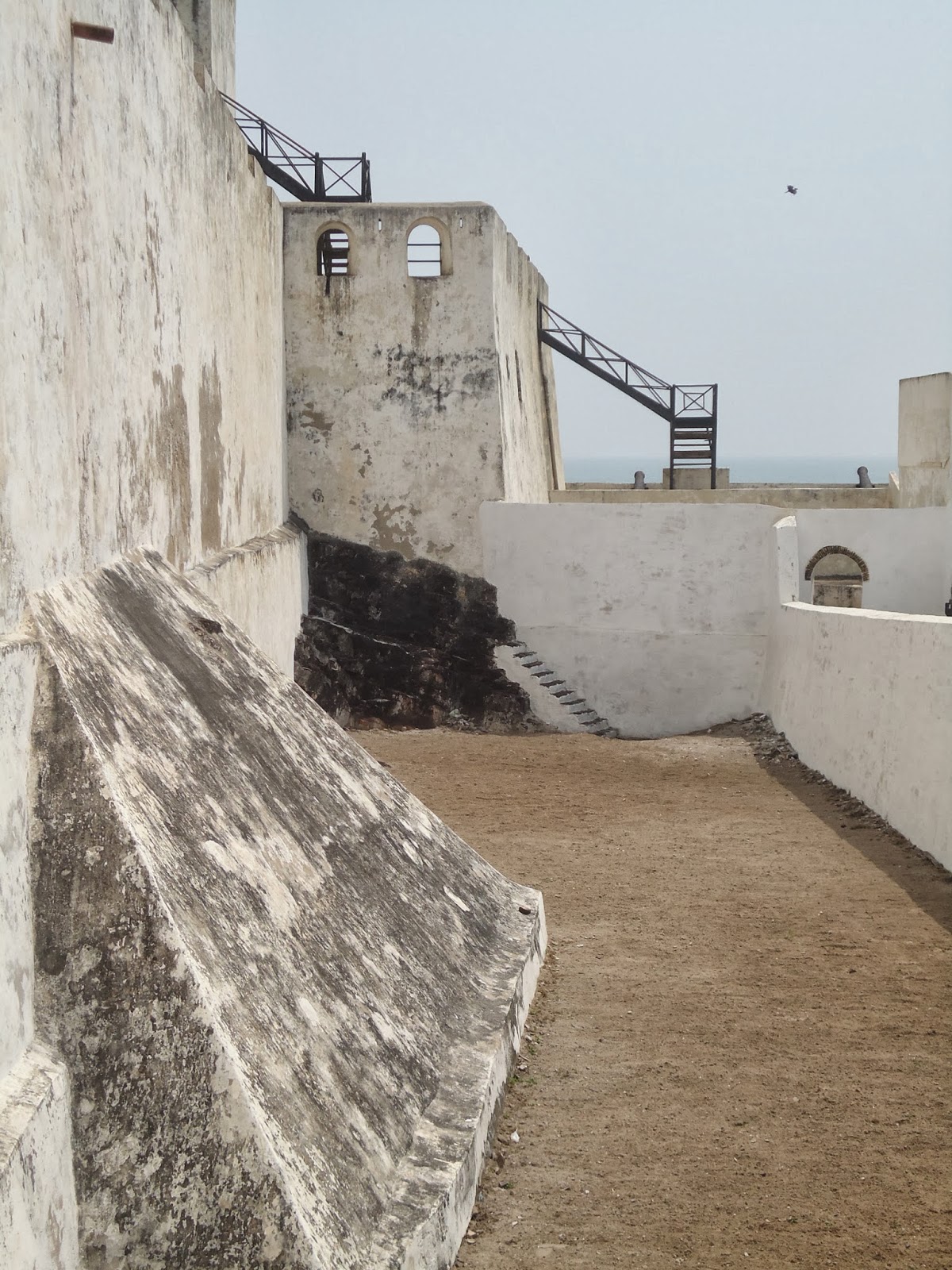 |
| En route to St. George's Castle, Elmina, Ghana |
St. George's Castle, built by the Portuguese in 1482, is the oldest European building south of the Sahara. It was built as a trading post during the height of the gold trade. Eventually, the slave trade became more lucrative, and the Dutch seized control of the castle in 1637.It became the African headquarters of the Dutch West Indies Company and was used as an Atlantic slave trade post until 1814. It wasn't until 1872 that the British took over the castle and used it for administrative purposes. Now it is a UNESCO World Heritage Site.
http://en.wikipedia.org/wiki/Elmina_Castle
http://whc.unesco.org/en/list/34
Coincidentally, the tour group from Kumasi that we joined with at Kakum was also at St. George's Castle! We toured the castle with them as well!
 |
| Entrance to the castle |
 |
| Dry moat for defense |
 |
| Inner courtyard of the castle |
 | |
| Death Room for unruly slaves |
Slaves were brought to the coast from the interior of Africa by slave catchers from the local tribes. The slaves were often bartered for from the local chiefs and kings. In exchange from the Dutch, the slave catchers would receive payment in various ways, including textiles and horses. The idea of local tribesmen buying slaves from chiefs and kings of the interior tribes and then selling them to the Europeans is new to me. I had never really thought of the process of how the slaves were captured or brought to the ships.
Men were separated from the women and children and kept in different holding areas until shipped out to central and South America. The slave ships would then bring raw materials from South America to Europe in exchange for goods brought to the African coast and sold or traded there.
 |
| Female slave hold |
 | |
| Small courtyard in slave hold area |
 |
| Large slave hold room for women |
 |
| Secret stairs to the Governor's quarters |
When a ship was ready to leave Elmina, slaves were ushered through other rooms and eventually left through "The Door of No Return", where they were loaded onto the ship and lowered into the hold for the long, often deadly journey to slave sellers in the western hemisphere.
 |
| Room leading to "No Return" |
 |
| Descending into the "No Return" rooms |
 |
| Door of No Return |
 |
| View looking out from No Return |
During the slave trade, the ocean level was much higher. Ships were moored right outside this door and the slaves were loaded onto the ships from here. The Wikipedia link has a pictorial example of what the castle looked like with water around it.
Our tour continued with exploring the castle's other levels.
 |
| Elmina from east side of the castle |
 |
| Looking east toward Cape Coast |
 |
| Taking a break from building a new boat! |
 |
| Looking west toward the port at Elmina, full of fishing boats! |
 |
| Fort St. Jago |
 |
| Nautical compass used by ship captains prior to embarking on journey |
This tour was very informative, yet sobering and exhausting as well. Our tour guide did a great job of mentioning that what we learned on the tour was not an indictment on any particular group of people. All parties involved shared the culpability of what happened there as well as many other venues of the slave trade. We were reminded that human trafficking is still practiced in many countries, either openly or on the black market. Man's inhumanity to man, powered by greed and self-domination, exists in many facets today.

No comments:
Post a Comment